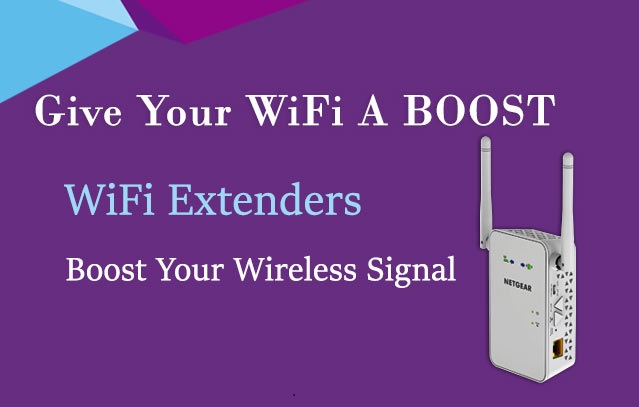Main wireless routers, adapters, and access point send and receive radio wave signals through the antennas. Today, most routers and access points have external visible antennas, but some of them are housed internally. Well, radio waves can be focused easily like a light bulb, and like a light, some materials stop or reduce the radio waves. Well, the light focused from several light sources is brighter and makes it clearly visible. On the other hand several antennas in the same area cause interference as well. This can affect the Netgear extender setup process and reduces radio signal clarity and effectiveness as well.
So, in order to optimize your existing wireless range, follow some rose petal guidelines below:
Positioning:
Place the router or access point in a central location of the house, rather than placing it in a corner, under table or back of any device. On the other hand, public WiFi locations have Access point (AP) usually mounted on the ceiling or a wall.
Minimize Obstacles:
As a matter of fact, a clear line of sight between the access point (AP) and the wireless device (laptop, computer, phone, and tablet) are ideal. Factors such as a number of concrete walls, its thickness, windows, reflection of mirror can affect signal strength and the internet connectivity as well. Conversely, a filing cabinet would shield the radio waves.
Avoid Interference:
Here, interference is referred to other electronic gadgets/ toys, Bluetooth speakers/ devices, microwave, baby monitors, etc. using radio waves in the similar 2.4 or 5 Gigahertz range. For example are other WiFi routers or access point in the same room, house or building. Microwave ovens, dishwasher, treadmill, mixer grinder, etc. when operating, could interfere a lot with internet connectivity.
Other brain-teaser examples of interference are cordless phones, 2.4GHz cordless phones, automatic garage opener, public WiFi, and refrigerator. On the other hand, interference can occur when your signal bounces off the reflecting objects.
Conversely, such objects can partly or completely absorb signals, bend them, reflect them or let them pass right through. Metal also reflect the WiFi signals. Water (including the water in human and fish tanks) absorbs signals as well. Air, wood, utensils, and glass tend to let internet signals pass, but weaken them as well. Plants, tress, and the weather also cause interference.
Note: Such obstructions also cause interference while accessing the mywifiext page also.
Check signal strength:
This depends on the location actually. Increase in strength would apply in general, to a country area, but not an urban area or a city. If it is too strong, then your neighbors would pick up your wireless network and might steal all your private and confidential data. On the other hand, power affects how far an antenna of your Netgear router or Netgear wireless range extender radiates. Strength of half or quarter is fine for most home or office users so that they can go through with new extender setup process without encountering any brain-teaser and annoying issue.
Antennae Type:
WiFi Antennas do not radiate (spread) equally in every direction. Just like a light beam can easily be focused by a reflector, similarly, the signal of a WiFi antenna can be blocked and focused.
This is because people cannot see radio waves; they are not visible. So, you must rely on testing to get an idea of where the antennas can shine brightly. Well, the more powerful and sensitive antennas are on Netgear smart wireless routers, access points, and detachable (removable) external antennas, in comparison with the antennas on client devices (USB dongles). The focus of an antenna is either a directional or Omni-directional antenna.
Well, the Omni-directional antennas are used in most home products, radiate horizontally all over. But they are weaker upward or downward. Suppose of internet signal strength like a doughnut shape. Where visible or able to see by anyone, these antennas are a rod a few inches long usually.
Following is the best example of an Omni-directional antenna
A high-gain antenna (directional antenna) radiates strongly or powerfully in a particular or a specific direction. It is generally a dish or can be said as a flat panel. These can easily be used for point-to-point transmissions, where two antennas are focused at each another directly. These actually need a line of sight between them, and possibly a large and open space around the main beam.
A beam is a structural/ systemic (especially as opposed to a particular part) element that primarily resists loads applied laterally (sideward) to the beam’s axis. Its mode of deflection (turning or diversion) is primarily by bending. Beams are characterized by their manner of support, profile, length, and material as well.
Following is an example of a directional antenna
When you are near the antennas, you receive a WiFi signal, even if you are out of the reach or range of it. But at longer distances, you are supposed to be in the range of your directional antenna.
For best results, address all the factors that affect your network and for that, you have to interact with our finest technicians working worldwide.

